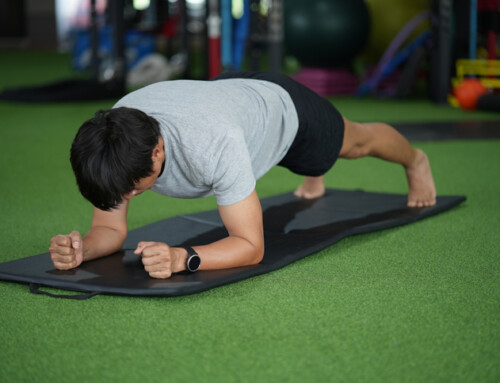By: Nicholas Gallagher, SPT
Dorsiflexion Limitation: Heel Cord Stretch
How Do You Assess Dorsiflexion?
In the past, you may have heard that you have a lack of dorsiflexion range of motion, or “tight heel cords”. A limitation in dorsiflexion can cause the body to force extra motion in the knees, hips, or spine to make up for the lack of motion in the ankles. As you can imagine, asking a joint to perform its own function, plus more, can really fatigue the joint! The more we use a joint out of its typical biomechanical properties, the more we set our body up for injuries.
There are many ways to test this range of motion, from which we can form 2 categories: weight-bearing and non-weight-bearing. Assessing dorsiflexion in the non-weight-bearing position is useful, but in terms of relative function, our ankles are not primarily used in a non-weight-bearing position. This leads us to assessing the weight-bearing position. This does not mean we should exclude a non-weight-bearing position, but in terms of the following assessment, we will set that aside for now.
Most research will argue between 2 “exercises” for assessing dorsiflexion range of motion: the forward arm squat and the overhead squat. The forward arm squat can be useful when looking at lower body gross range of motion and strength, whereas the overhead squat is more useful when looking at the relationship between upper and lower body range of motion. The overhead squat is used primarily in research and screening for athletes. Recently, research has shown the complexity of the overhead squat, and many individuals are not able to execute this movement pattern correctly. If the overhead squat calls for many joints to perform many functions, is it fair to tell an individual they have inadequate dorsiflexion range of motion if they are unable to complete this movement? Maybe we can solve this problem with the forward arm squat.
The Overhead Squat
When comparing the overhead squat and forward arm squat, the overhead squat calls for a greater amount of dorsiflexion motion when performed correctly. This means that if an individual performs the overhead squat and their heels are able to stay in contact with the ground, the individual can confidently rule out a limitation of dorsiflexion motion. Therefore, we can classify the overhead squat as having a very high sensitivity rate, or a very low false negative rate. But consequently, if the individual performs an overhead squat and their heels come up, we cannot confidently tell this individual that they have a limitation in dorsiflexion. This is due to the following: the amount of motion needed when performing the overhead squat is often more than the typical range of motion we look for. Therefore, we can classify the overhead squat as having low specificity, or high false positive rates.
The Forward Arm Squat
The forward arm squat can be looked at as the opposite of the overhead squat, meaning it has low sensitivity (high false negative) and high specificity (low false positive) rates. In general terms, the forward arm squat is better for ruling in a limitation of dorsiflexion range of motion. For example, if an individual performs a forward arm squat and their heels come off the ground, we can accurately state that the individual has a limitation of dorsiflexion range of motion. If another individual performs the forward arm squat and their heels do not lose contact with the ground, we cannot accurately say that this individual has typical dorsiflexion range of motion.
What You Can Do
The overhead squat is good for ruling out limited dorsiflexion, while the forward arm squat is good for ruling in limited dorsiflexion. Using this information, we can perform an assessment utilizing both movements that takes less than 1 minute:
- Perform an overhead squat
- Do your heels come up?
- Move to the next step
- Do your heels stay in contact with the ground?
- You can stop, you have adequate dorsiflexion range of motion
- Do your heels come up?
- Perform a forward arm squat
- Do your heels come up?
- There is a good chance you have a limitation in dorsiflexion range of motion
- Do you heels stay in contact with the ground?
- There is a possibility you have typical dorsiflexion range of motion
- **As stated above, since the forward arm squat shows a low sensitivity (high false negative risk), if you fall under this category, additional testing may need to be completed to accurately assess your dorsiflexion motion.
- There is a possibility you have typical dorsiflexion range of motion
- Do your heels come up?
If you have a lack of dorsiflexion range of motion, it is nothing to worry about. Most of us live out our days with this restricted motion, but increasing your range can help decrease the risk of orthopedic problems such as those listed above.
As a lack of dorsiflexion can be attributed to many causes, it would be best to contact a physical therapist to help craft a personalized plan for increasing your range of motion. Our qualified therapists at Capital Area Physical Therapy & Wellness are ready to help! Call one of our physical therapy clinics in Malta – Saratoga Springs at (518) 289-5242 or in Queensbury – Glens Falls at (518) 502-1154 to schedule an appointment!





